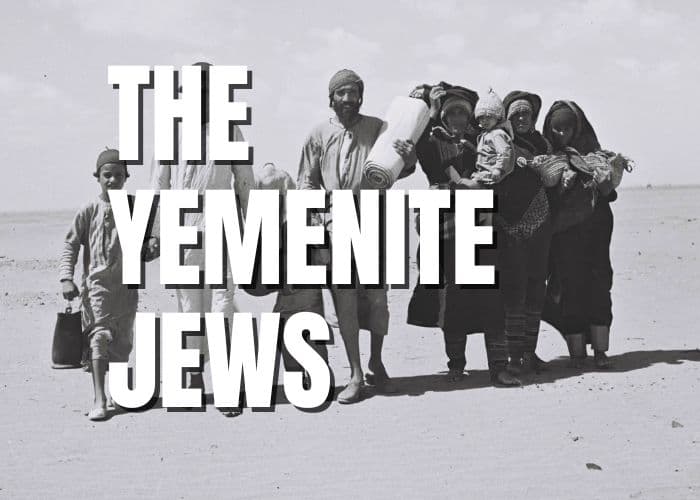Yemenite Jews: A Rich History, Culture, and Contributions
Yemenite Jews, also known as Temanim, are a Jewish community from Yemen, one of the oldest Jewish communities in the world. Their history dates back to the Babylonian exile, when Jews were taken to Babylon, modern-day Iraq. Yemenite Jews have a rich and unique culture, including their own language, music, and cuisine. In this article, we will explore the history, culture, and contributions of Yemenite Jews.
- History
Yemenite Jews have a long and complex history that dates back over 2,500 years. They believe that their ancestors were among the Jews who were taken into captivity by the Babylonians in 586 BCE. These Jews were allowed to return to Jerusalem in 538 BCE by King Cyrus of Persia, but some chose to remain in Babylon. It is believed that some of these Jews eventually made their way to Yemen.
Yemenite Jews lived in relative isolation in Yemen for centuries, where they developed a unique culture and way of life. They were known for their piety and scholarship, and many Yemenite Jews became rabbis and scholars of Jewish law.
In the 19th and 20th centuries, many Yemenite Jews began to leave Yemen due to persecution and economic hardship. They migrated to Israel, the United States, and other countries, where they formed new communities.
- Communities Today
Today, Yemenite Jews live all over the world, but the largest community is in Israel. Many Yemenite Jews migrated to Israel in the mid-20th century as part of the mass migration of Jews from Arab countries. In Israel, Yemenite Jews formed their own neighborhoods and communities, where they continued to practice their unique customs and traditions.
- Culture
Yemenite Jews have a rich and unique culture that is distinct from other Jewish communities. One of the most striking aspects of Yemenite Jewish culture is their language, known as Judeo-Yemeni. This is a form of Arabic that has been heavily influenced by Hebrew, and it is still spoken by some Yemenite Jews today.
Yemenite Jewish music is also a unique and important aspect of their culture. They have their own distinct musical style, which includes traditional instruments such as the qanun, a type of zither, and the oud, a type of lute. Yemenite Jewish music is often accompanied by traditional dance, which is known as the Yemenite step.
Yemenite Jewish cuisine is also an important part of their culture. Some of the most popular Yemenite Jewish dishes include jachnun, a type of rolled pastry that is served with tomato dip, and malawach, a type of layered flatbread that is served with hot sauce and hard-boiled eggs.
- Religious Liturgy
Yemenite Jews have their own distinct religious liturgy, which is known as the Yemenite rite. This rite is characterized by its use of ancient melodies and the pronunciation of Hebrew, which is said to be closer to the original pronunciation used in ancient times.
One of the most notable aspects of the Yemenite rite is the recitation of the Shema prayer. In the Yemenite rite, the Shema is chanted in a unique melody that is said to be very ancient. This melody has been passed down from generation to generation, and it is still used by Yemenite Jews today.
5. Notable People and Accomplishments
Throughout history, Yemenite Jews have made significant contributions to various fields, including literature, music, and religion. Here are a few notable figures and their accomplishments:
- Rabbi Yosef Qafih (1922-2000) – A prominent Yemenite Jewish scholar and leader, Qafih was a prolific author who wrote extensively on Jewish law, history, and philosophy. He also played a key role in preserving and promoting Yemenite Jewish heritage and culture.
- Shalom Shabazi (1619-1720) – A revered poet and religious leader, Shabazi is considered one of the greatest Yemenite Jewish poets of all time. He wrote hundreds of poems, many of which are still recited in synagogues today.
- Ofra Haza (1957-2000) – A Yemenite-Israeli singer, Haza was one of Israel’s most popular and successful musicians. She gained international recognition for her fusion of traditional Yemenite music with contemporary Western styles.
- Rabbi Amram Qorah (1865-1939) – A respected Yemenite Jewish scholar and leader, Qorah played a pivotal role in the revitalization of Yemenite Jewish education and culture. He established schools, published books, and worked tirelessly to preserve Yemenite Jewish traditions.
- Rabbi Yihya Yitzhak Halevi (1867-1932) – A noted Yemenite Jewish scholar and leader, Halevi was a key figure in the movement to revive the ancient Yemenite Jewish liturgy. He researched and collected old prayer books and melodies, which he used to create a new version of the Yemenite Jewish prayer book.
- Rabbi Shelomo Moussaieff (1890-1971) – A renowned Yemenite Jewish scholar and leader, Moussaieff was an expert in Jewish law and Kabbalah. He served as the chief rabbi of Aden and was a key figure in the Yemenite Jewish community’s migration to Israel.
- Rabbi Shalom ben Yosef Sharabi (1720-1777) – A prominent Yemenite Jewish rabbi and Kabbalist, Sharabi is known for his teachings on the mystical aspects of Jewish law and the nature of the soul. He founded a renowned yeshiva in Jerusalem, which became a center of Kabbalistic learning.
Conclusion
The history of Yemenite Jews is rich and complex, spanning over two millennia and encompassing a wide range of experiences, from periods of flourishing to times of persecution and hardship. Despite the challenges they have faced, Yemenite Jews have managed to preserve their unique cultural heritage and make important contributions to various fields. Today, the Yemenite Jewish community is dispersed across the globe, but their legacy lives on through their music, literature, and religious traditions.








Ohr HaChaim Yomi – Emor